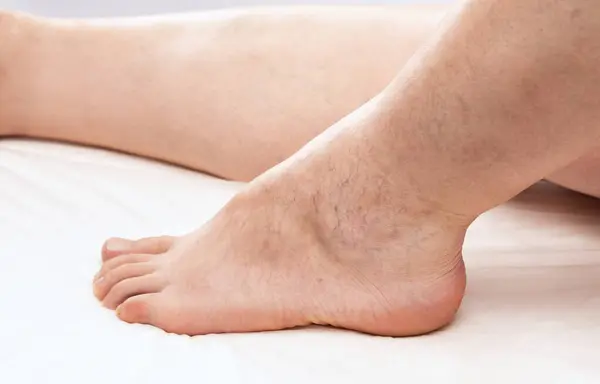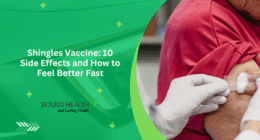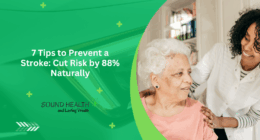Leg swelling may seem like a minor annoyance—something that comes with age, fatigue, or simply sitting too long. But for women over 50, it can signal something far more serious: chronic venous insufficiency (CVI). This condition affects the veins in your legs, preventing them from returning blood efficiently to the heart. Left untreated, it can lead to lasting complications, including painful ulcers and irreversible skin damage.
Recently, the topic made headlines when former U.S. President Donald Trump was spotted with noticeably swollen legs, sparking concern and speculation over his vascular health. While no official diagnosis was given, the incident served as a stark reminder that leg swelling is not just cosmetic or age-related—it may be a symptom of a deeper circulatory problem that affects millions, often silently.

For many women entering their 50s and beyond, this is the decade when hormonal shifts, lifestyle factors, and past health habits converge—making vascular conditions more common and more dangerous. In this article, we’ll look at what CVI really is, how to recognize the earliest symptoms, why women are more vulnerable, and which treatments can make a real difference when started early.
Understanding the warning signs may not just improve your comfort—it could save your mobility, and possibly your life.
What Is Chronic Venous Insufficiency?
Chronic venous insufficiency (CVI) is a progressive vascular condition where the veins in the legs struggle to return blood efficiently back to the heart. This inefficiency is usually the result of damaged or weakened valves in the veins. Instead of flowing upward as it should, blood pools in the lower extremities, particularly the legs, leading to a range of symptoms that may initially seem harmless but can worsen over time if left untreated.
Although CVI affects both men and women, women over 50 are at increased risk due to hormonal changes from menopause, a higher prevalence of varicose veins, and cumulative strain from pregnancies or long periods of sitting or standing. Genetics also plays a role, as does lifestyle. The term itself may sound clinical, but its effects are far from abstract. From aching legs to persistent swelling, what starts as mild discomfort can lead to severe complications, including skin ulcers and mobility challenges.
Notably, former U.S. President Donald Trump sparked speculation when visible leg swelling raised public curiosity about potential vascular issues—reminding the public that even the most prominent individuals aren’t immune to this common but often overlooked condition.
Subtle Signs You Shouldn’t Ignore: The Early Symptoms of CVI
Chronic venous insufficiency often begins quietly, with vague symptoms that may be mistaken for normal aging or fatigue. This is precisely what makes early detection so crucial. The body gives us warning signs long before the disease becomes debilitating.
Women over 50, in particular, should pay close attention to these red flags:
- Persistent leg swelling (especially in the ankles and calves)
- Heaviness or fatigue in the legs by day’s end
- Aching or throbbing pain in the lower limbs
- Itchy or dry skin on the legs that worsens over time
- Visible varicose or spider veins, sometimes appearing suddenly
- Darkened skin or discoloration around the ankles or shins
- Leg cramps, especially at night, disrupting sleep
- Open sores (venous ulcers) that are slow to heal
These symptoms can fluctuate in intensity and may initially come and go. What makes them tricky is their tendency to be brushed off—chalked up to overexertion or aging. However, untreated CVI can cause more serious vascular damage, chronic pain, and even long-term disability.
A woman in her late 50s named Joy, for example, thought the swelling in her left ankle was due to new shoes. Months later, she found herself unable to stand comfortably for more than 10 minutes without pain. A vascular specialist diagnosed her with advanced CVI, which could’ve been managed more effectively had it been caught earlier.
Why Women Over 50 Are at Greater Risk for Chronic Venous Insufficiency
By midlife, many women experience hormonal shifts that affect vein elasticity and valve performance. Estrogen levels drop, contributing to changes in vascular function. Add to that a history of pregnancies—which put immense pressure on the venous system—and the risk increases significantly.
Occupational habits also matter. Professions that involve standing for long periods, such as teaching, nursing, or retail work, can exacerbate vein pressure. Likewise, sedentary lifestyles contribute to poor circulation and weakened calf muscles, which play a crucial role in pushing blood upward.
Statistics underscore this concern. According to the American Heart Association, CVI affects up to 40% of women over 50, with the condition being more common than peripheral artery disease or stroke in this demographic. Yet, it remains underdiagnosed and undertreated—especially in communities where routine vascular screening isn’t common practice.
Could Leg Swelling Be a Sign of Something More Serious?
Former President Donald Trump drew media attention when recent photos revealed noticeable swelling in his lower legs. While public speculation is not a diagnostic tool, medical experts agree that such swelling in individuals over 70 can signal a deeper circulatory issue like CVI or even deep vein thrombosis (DVT).
Leg swelling isn’t always dramatic. Sometimes it’s just a persistent tightness in your socks or a subtle puffiness that appears by evening. However, when it’s recurrent or combined with other symptoms like skin darkening or vein visibility, it should not be ignored.
A small but telling sign, such as difficulty wearing once-comfortable shoes or feeling like your calves are “heavy,” may be your body signaling poor venous return. This is especially crucial for older adults, who may also be at risk of clot formation, which could lead to life-threatening complications if left untreated.
Treatment Options: From Lifestyle Adjustments to Medical Interventions
The good news is that chronic venous insufficiency is treatable, and early intervention can prevent severe complications. Treatment usually begins conservatively and progresses based on severity and symptom response.
Non-Invasive Treatments:
- Compression stockings – Help improve blood flow and reduce swelling.
- Elevating the legs – Especially during long periods of sitting or after work.
- Regular exercise – Walking, cycling, or calf raises enhance circulation.
- Weight management – Reduces strain on the lower veins.
- Dietary changes – Lowering salt intake can help decrease fluid retention.
Medical and Surgical Interventions:
- Sclerotherapy – Injects a solution into small veins to collapse and fade them.
- Endovenous laser therapy (EVLT) – A minimally invasive procedure using laser energy to close faulty veins.
- Radiofrequency ablation – Similar to EVLT but uses radio waves instead.
- Vein stripping or ligation – Typically reserved for severe cases.
Modern vascular clinics often use ultrasound to precisely map vein function and recommend the most appropriate treatment path. Most procedures are outpatient and require minimal recovery time, making them suitable even for those in their 60s and 70s.
When Should You See a Specialist?
If you’ve noticed consistent symptoms over a period of weeks—or if they are worsening—it’s time to seek medical evaluation. A vascular specialist can conduct non-invasive tests like duplex ultrasound to measure blood flow and vein valve performance.
You don’t have to wait until ulcers form or your mobility is affected. Earlier treatment offers better outcomes. Some women wait years before addressing their symptoms, only to discover they’ve already developed chronic skin changes or irreversible venous damage.
As one 63-year-old patient described it, “I didn’t know swollen ankles could turn into something this serious. I wish I hadn’t waited.”
Also Read | Feeling Tired Always? Doctors Reveal Sleep Hours by Age










